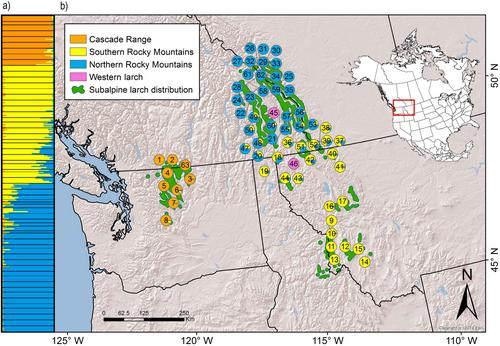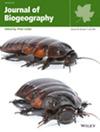The Range-Wide Genetic Structure of a High-Elevation Conifer Species, Subalpine Larch
Abstract
Aim
Subalpine larch is a long-lived conifer with a restricted distribution at treeline in the mountains of western North America. Climate change is reducing the availability of this habitat and subalpine larch is unlikely to adapt to its changing environment due to its long generation time, relatively low levels of standing genetic variation and the high degree of habitat fragmentation across the species' range. This study seeks to elucidate the genetic structure of subalpine larch to inform future conservation and management efforts.
Location
Western North America.
Taxon
Subalpine larch (Larix lyallii Parl.).
Methods
Tissue was collected from high-elevation populations across the entire species range. Restriction site associated DNA sequencing was used to generate single nucleotide polymorphism (SNP) data. Population genetic analyses identified genetic differentiation.
Results
Clustering analyses performed using 751 neutral SNPs identified three genetically differentiated regions: the Cascade Range, the southern Rocky Mountains and the northern Rocky Mountains. AMOVA confirmed significant genetic differentiation among regions. A discriminant analysis of principal components and a dendrogram of Provesti's genetic distance both supported the hypothesis that genetically distinct lineages arose after dispersal from a single Pleistocene refugium. Significant isolation by distance (IBD) supported the key role of dispersal in shaping modern patterns of genetic variation in subalpine larch.
Main Conclusions
Post-Pleistocene dispersal resulted in genetic differentiation among groups of subalpine larch in the Cascade Range, the southern Rocky Mountains and the northern Rocky Mountains. These three regions should be prioritised for future management.


 求助内容:
求助内容: 应助结果提醒方式:
应助结果提醒方式:


